Yet CEDAW – Convention of the Elimination of All Forms of Discrimination Against Women – has likely impacted on her life and her daughters, if [...]]]>
Yet CEDAW – Convention of the Elimination of All Forms of Discrimination Against Women – has likely impacted on her life and her daughters, if she has any, in many ways, from pension and inheritance rights to the passport they hold.
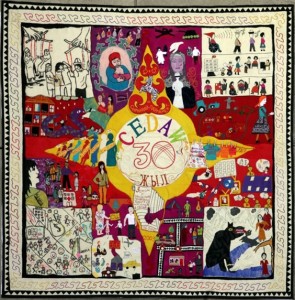
Quilt made by women of Kyrgztan. (Unifem)
CEDAW, which was adopted by the United Nations General Assembly 30 years ago today, is the global Bill of Rights for Women, the first international human rights treaty devoted to gender equality.
Through its 30 articles, CEDAW has boosted women’s rights worldwide in many ways.
Some examples: new constitutional guarantees for women in Thailand; land- owning rights for women in Kyrgyzstan and Tajikistan; changes to the law of evidence to benefit women in the Solomon Islands; and reproductive health rights in Colombia.
India outlawed sexual harassment in the workplace, Mexico tightened its domestic violence laws and Morocco passed a new family code in 2004. Read more here.
Today CEDAW turns 30 and is the world’s most widely ratified treaty, with 186 signatory countries.
But there is no time to rest on laurels.
Attempts by conservative forces – from Washington to Jerusalem, from Riyadh to Jakarta – to erode CEDAW are underway, primarily in the field of women’s reproductive rights, nationality, family rights and relationships.
Several countries have failed to ratify the treaty – Iran, Nauru, Palau, Somalia, Sudan, Tonga and the United States, although the Obama administration has indicated it will.
Twenty-two countries have signed and ratified but reserve the right not to implement certain provisions.
Some are minor: Australia does not want to send women soldiers into combat.
Others are more threatening: the United Arab Emirates wants to keep its unequal inheritance laws based on Shariah, and Algeria, its Family Law.
Worldwide, the treaty’s implementation is uneven. In the Occupied Palestinian Territories, Palestinian women suffer abuse and denial of basic human rights at the hands of Israeli settlers and soldiers. The right to family reunification is particularly ignored.
Nevertheless, in three decades, CEDAW has truly changed the world for women, for those who fly on planes and for those who ride donkey carts alike. Equality is our right.
HAPPY ANNIVERSARY!
Why today? Because it’s the last of the 16 Days against Violence against Women, arguably the best known global campaign of the women’s movement, and also Human Rights Day.
Today, Sahrawi activist Aminatou Haidar starts her fourth week of [...]]]>

What's in the news on Human Rights Day?
Why today? Because it’s the last of the 16 Days against Violence against Women, arguably the best known global campaign of the women’s movement, and also Human Rights Day.
Today, Sahrawi activist Aminatou Haidar starts her fourth week of hunger strike at Lanzarote airport in the Canary Islands. She is so weak she has to be transported to court by wheelchair or stretcher. Last week, the head of UNHCR called on Spain and Morocco to resolve her issue on humanitarian grounds.
The award-winning Haidar is known as the Sahrawi Gandhi for her non-violent protests for the independence of her desert country, the Western Sahara, ruled by Morocco since 1975.
In November, the Moroccan government unlawfully withdrew her passport and deported her when Haidar returned from receiving the prestigious Civil Courage Prize in New York. In 2008 she received the Robert F. Kennedy Human Rights award.
On the other side of the world, in the Philippines, on 23 November, the eve of 16 Days, 22 women were massacred along with 35 men. The women were raped, sexually mutilated and shot in their private parts. The mass murder was instigated by a local politician-warlord and carried out by his militia. Among the victims were the wife and sister of a rival political candidate and two women lawyers who worked for him.
Believing that the Muslim tradition of respecting women would protect them from clan violence, the group was going to file papers for the candidate, along with a group of journalists. Among the 57 killed were 30 thirty media people, journalists, technicians and drivers. This is the largest single killing of journalists in history.
Earlier in November, Cuban blogger Yoani Sanchez, along with two less well-known bloggers, a woman and a man, were detained and beaten up by authorities in Havana. They were on their way to a peaceful march.
Is this cause for despair? No. These examples of violence unleashed against women in politics and media only reaffirms our commitment to denounce these crimes and seek justice.
The media now has a better tool to do this job. On 25 November, IPS presented its new handbook on reporting on women and violence. User-friendly, with an agile layout, it covers a wide spectrum of issues, from cyberstalking to trafficking, with story examples, discussion points, fact checks and additional resources. Download it here.

Do it now! No time to lose!
Email your support for Aminatou here or at: todosconaminatou@gmail.com
And do whatever you can do to end violence against women and protect human rights defenders wherever you are.
]]>
What had tongues wagging was citizen’s journalism, dispatches by ordinary folk about electoral irregularities from the Rovuma to the Maputo rivers.
Good stuff: government cars illegally used for campaigning, [...]]]>
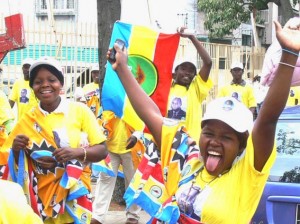
The sisters can do it by themselves. By A. Vilanculos
The buzz in Mozambique during the recent elections was not the TV debate among presidential candidates debate (there is none) or their programs (all vague).
What had tongues wagging was citizen’s journalism, dispatches by ordinary folk about electoral irregularities from the Rovuma to the Maputo rivers.
Good stuff: government cars illegally used for campaigning, with cellphone pics of their registration plates (until officials wised up and started covering up plates and ministry logos with party posters). Reports of youth tearing downs other party’s posters, fistfights, intimidation, and police lack of impartiality.
On election day, people told of late opening of polling booths and misbehaviour of poll officials and party observers.
Information was relayed by a network of 110 correspondents in 11provinces (most community radio reporters) and concerned citizens who texted, phoned and emailed.
The information was fact-checked and collected in a daily bulletin produced by the Centro de Integridade Publica (an NGO anti-corruption monitor).
The bulletin, in Portuguese and English, was emailed as pdf to some 3,000 subscribers, who redistributed it to at least double this number, and was widely reproduced, for free, by the local press, especially the 60+ community radio stations.
This was watchdog citizen journalism at its best.
Thanks to the Bulletin, Mozambicans had balanced coverage of the pre-poll partial exclusion of the new kid in the block, the opposition MDM, of the instances of ballot box stuffing and the invalidation of 100,000 votes.
The Bulletin provided a credible, professional and impartial source of information, above party politics (Mozambican media is aligned with political parties, ideological blocs and economic interests).
Bits of similar projecst exist elsewhere in Africa but I don’t know of any other so well-rounded.
In Kenya, during the post-electoral conflict two years ago, people texted and phoned in reports of violence to a hotline set up by an enterprising NGO. The information was quickly confirmed and uploaded onto a web map. The press, donors, and people could keep tabs on which parts of Kenya were burning.
Ghana made good use of sms by citizen correspondents during its recent elections.
Imagine if women developed such a tool.
Imagine that the 50-50 Campaign for equal political representation in Malawi could track women candidates during the campaign and the polls, and keep tabs on the insults, the stone-throwing, and the intimidation of women candidates seen last year.
In South Africa, during the 15 days against Violence against Women that started this week, a daily bulletin could keep track of gender-based abuse, collecting reports from police, rape crisis centres, and shelters. This would provide a graphic picture of South Africa’s second epidemic, after AIDS.
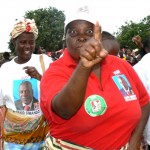
Grab it now! Pic b y A. Vilanculos
Historically, women are the last to use new technologies. This time, we should grab it now!
Check the Take Back the Tech site for cool ideas on taking control of digital technology to end violence against women.
And not only digital – one idea I liked is to go for a walk with a chalk and write up your thoughts on public space.
Watch the sidewalks of my neighbourhood in Pretoria – have chalk and thoughts, will walk.
* Read IPS stories on femicide in Chile, forced sterilisation in Peru and gender-based violence elsewhere.
]]>I will call her Gabra (gift, in Amharic), for our conversation was private. I met her at a monastery near Lalibela, the mystical city of [...]]]>
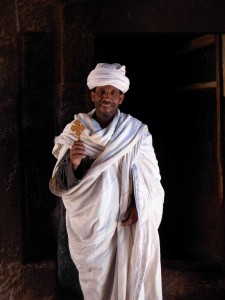
Patriarchal in all senses. By M. Sayagues
What drives a 17-year-old girl to enter a monastery? Today she is 30, and still happy about her choice. Her eyes sparkle and her laughter comes easy. She exudes peace.
I will call her Gabra (gift, in Amharic), for our conversation was private. I met her at a monastery near Lalibela, the mystical city of rock-hewn churches in northern Ethiopia.
Monastic life has a long tradition and prestige in the Ethiopian Orthodox Church. The oldest monastery dates from the 6th century. A monastic renaissance between the 13th and 16th century brought great moral and political authority to clergy.

Custodians of tradition
Gabra’s rock-hewn monastery dates from the 12th century. Her room is excavated in the pink tufa rock. Two built-in-the-rock platforms, covered with a thin mattress, do as couch and bed. An old cupboard holds a few plates and cooking utensils, three of the long green robes worn by Ethiopian peasants, the white headscarves that nuns wear, and two pairs of sandals.
For income, she and her fellow nuns weave cotton and silk into diaphanous shawls, sold at the monastery. She rises before dawn to pray – the first of daily seven prayers. Her ambition is to study theology in Addis Ababa or in Lalibela.
Gabra is not completely cut off from the world. She has a cellphone and a radio. On Sundays, relatives and friends visit.
Choices
I ask her if marriage and children ever interested her.
“It is a privilege to be single and not to have children,” she says softly, smiling but firmly. She sounds relieved.
Unmarried myself, I agree that motherhood and marriage are just one option. I understand the spiritual call, the peace of contemplation and withdrawal, of a simple lifestyle unencumbered by material things.
Yet I wonder if female genital mutilation had to do with her decision.
In Ethiopia’s eastern region, a girl might suffer genital cutting between the age of 15-17, before marriage. Her clitoris would be cut, sometimes the labia.
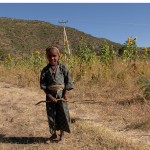
She has a right to her bodily integrity.
In Somali region, she would have infibulation at a younger age: the complete removal of her genitalia and, to preserve virginity, being stitched shut with an acacia thorn, leaving only a hole to urinate.
About three-quarters of women in Ethiopia between 15-49 have suffered some form of genital mutilation, said a government survey of 2005. The practice is fading – but too slowly, say activists.
It is not called mutilation for nothing. Sex and childbirth will be extremely painful and dangerous.
If finding a husband means suffering genital cutting, a hard mattress in a rock-hewn room is a much better place than a king-size wedding bed.
Gabra did not speak English, my male guide spoke little, and sex topics are taboo in Ethiopia, so the conversation went in another direction. Gabra was curious about my life, my work, and my daughter. 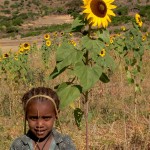
“Would you want to live like me?” she asked. “I don’t think I could,” I said. “But I feel the beauty of this simplicity.” She smiled.
Ethiopia looks and feels ancient and spiritual. Social cohesion is remarkable. But the same lifestyle that makes ferenji (foreigner, in Amharic) wax lyrical about the “biblical landscape and people” binds women to painful and dangerous traditions.
Some traditions are simply annoying. Women cannot join the rites if they are menstruating, ergo unclean. At no time of the month can women, local or foreign, enter the most sacred chapel of the Lalibela complex, Bete Mikael, where King Lalibela is buried. We are only allowed a glimpse from the door. In some monasteries, no females, including of the animal kingdom, are allowed.
Monastery visitors take leave at 5 PM (international time; in Ethiopian time, 11 in the night). I make my way down the stony path, the tufa rock glowing pink and gold in the sunset.
I am thinking that the monastery – the spiritual world – may be a blessed refuge from the hardship of being born female in a deeply patriarchal world.
Read recent IPS stories about genital cutting in Uganda, Sierra Leone and cross-border in West Africa.
]]>Burqa-wearing women may lose the right to drive in Bahrain over a conflict between government and conservative lawmakers.
The government wants to amend the traffic law and grant male traffic officers the right to ask women to lift the veil and show their faces.
On the other [...]]]>
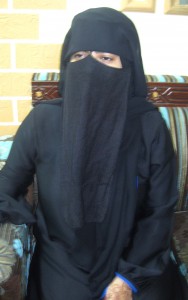
Dressed to drive? By S.Hamada
Burqa-wearing women may lose the right to drive in Bahrain over a conflict between government and conservative lawmakers.
The government wants to amend the traffic law and grant male traffic officers the right to ask women to lift the veil and show their faces.
On the other hand, some lawmakers are loath to approve the amendment or at least demand that female traffic officers be employed for this task.
Let’s hope that in either way it will be a win-win situation for women: that they will continue to drive, and enter a job sector that has been reserved for men since the 1970s. Bahrain doesn’t impose a dress code on women. Wearing a burqa (or Niqab, in Bahrain) is a personal choice.
OK, not all women here wear a burqa as personal choice; some do it to obey their male relatives or conservative families. Whatever the reasons, burqa limits women’s social and professional activities. For example, they cannot eat at restaurants without closed cabins nor work in many sectors except those with limited, female-only jobs.
Anyway, women who feel comfortable wearing a burqa shouldn’t be discriminated or underestimated. Females worldwide should be allowed to speak their minds, lead their lives to the fullest and freely practice their faiths.
Forcing women to take off their burqa is as cruel as forcing the veil on them.
A measure of independence
Burqa-wearing women in Bahrain have one important right – they can drive.
This is fairly new. Before 2006, burqa-wearing women drivers were harassed by traffic officers and fined.
In 2006 the government allowed burqa-clad drivers as a result of pressure from conservative MPs, who represent the majority of the Lower House, with the proviso that these women should, if requested, show their faces to traffic officers, for security reasons.
Not all were pleased with that decision. A Bahraini columnist, Abdullah Al Ayobi, argues that, for security reasons, fully covered women should not drive. He wrote last year that Bahrain was the only country in the world that allows unidentified individuals to drive.
Being able to drive has made life easier for women, especially with Bahrain’s poor public transportation.
We will soon know whether burqa-wearing women will continue to drive legally in Bahrain.
]]>The UN has finally decided to stand up for women! A decision to create a new agency for women was taken by the General Assembly on September14.
Our colleague Thalif Deen, IPS bureau chief in New York, was the first and only journalist to report it for the [...]]]>
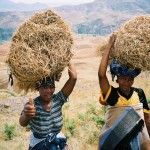
A breakthrough for us as well? M. Sayagues
The UN has finally decided to stand up for women! A decision to create a new agency for women was taken by the General Assembly on September14.
Our colleague Thalif Deen, IPS bureau chief in New York, was the first and only journalist to report it for the first several hours.
But this blog is not to crow about our scoop.
I’m quite excited by the prospect of a new women’s agency with money and political power. No longer will the world’s feminists have to lobby from the outside to put their views on the table. They have now won admission to the high table.
Any one of those bright, articulate, activist women can emerge to lead the agency. The reality is likely to be less rosy. But chances are that, because it’s new, it will be less under the thumb of the old boy network.
You think I’m a romantic? What the hell, there is no harm in dreaming, is there? I like to think that there was no way that the General Assembly could have once again shelved the plan for a new women’s agency.
It’s 14 years since Beijing. All the small and big things that governments were forced to accept around women’s rights (CEDAW, MDG, etc.) made it impossible for any country to block the efforts of myriad initiatives (from small grassroots groups to reforms in government policies even if they started as mere tokenism) and to politicise the cause of gender equality.
I do see great hope in the increasing presence of women in politics – Liberia, Japan, India, wherever you look, even Iran (new ministers) and the Gulf (Saudi Arabia has made a few small concessions to women!).
Of course, there is a backlash too – more violence against women worldwide.
As IPS gender editor, I am sure we will keep track of the new agency as it will be a key player achieving the MDG3 goal – gender equality.
Well, hope springs eternal!
]]>Instead of striking a balance between ambition and realism, the MDGs have become [...]]]>
Instead of striking a balance between ambition and realism, the MDGs have become “money-metric and donor-centric”, “meaningless catch-all phrases.”
So says Jan Vandemoortele, a Belgian national, a United Nations senior official and one of the architects of the MDGs, in a thought-provoking article in the July issue of Development Policy Review of the Overseas Development Institute. (read it here)
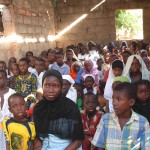
Unrealistic goal? A crowded classroom in Guinea Bissau...
The author recalls that the MDGs were set up in 2000 as collective targets based on extrapolations of global trends. They are vague by definition; they are not one-size-fits-all.
Instead, one should look at countries’ historical backgrounds, natural endowments and specific problems, then adapt the Goals to each circumstance, as Mozambique, Cambodia and Ethiopia have done.
Otherwise, this puts undue pressure on the poorest countries and, given that most of these are in Africa, nurtures Afro-pessimism.
For example, the global target for education “is not realistic” for countries in conflict, he says.
True, targets do change. For example, water for all in 2015 morphed into the more feasible goal of halving the number of people without clean water.
Magic numbers
A mantra has evolved: if only there were more money and higher economic growth, the MDGs would be achieved. Who is fond of these “magic numbers”? Staff at global headquarters of aid organisations, says the author, because of their “excessive reliance on abstract concepts.” (he should know, with his long career as a top UN official).
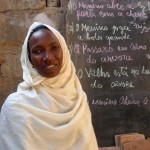
..and their teacher. By M. Sayagues
Vandemoortele sees the MDG canon being usurped by interest groups to push their agendas or devalued “as a repackaged call for more foreign aid.”
Rather, the MDG should be a tool to examine disparities and inequities within countries. In his view, the poorest people continue to be excluded. Many of these are women. Without better sex-disaggregated data, the gender dimension of hunger, illiteracy, disease and poverty remains unexposed.
Most progress takes place among the better off, and inequality and inequity keep rising, says the author.
“The targets are often presented as a universal good that will not demand tough policy choices and hard trade-offs among social groups within a country,” he says.
The MDGs should usher in new thinking about inequalities if they are not to miss the point
What do you think? Send us your views.
]]>Have you seen the Italian documentary Il corpo delle donne (available with English subtitles)?
It is horrifying, like a horror movie.
“Women –real women— are an endangered species on television, one that is being replaced by a grotesque, vulgar and humiliating representation,” says an introduction to the documentary [...]]]>
Have you seen the Italian documentary Il corpo delle donne (available with English subtitles)?
It is horrifying, like a horror movie.
“Women –real women— are an endangered species on television, one that is being replaced by a grotesque, vulgar and humiliating representation,” says an introduction to the documentary by Lorella Zanardo.
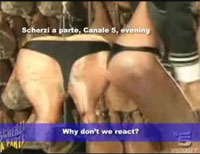
This picture shows a woman hanged from the ceiling, like a ham, surrounded by legs of ham. This and other images, taken from real TV shows, speak for themselves.
Il corpo delle donne is a 25-minute terrifying documentary that undresses the degradation of women in Italian television.
“This led us to select television images that share a common manipulative exploitation of the woman’s body, to let people know what is happening –not only people who never watch television, but especially those who watch it but ‘don’t see’,” says the introduction.
Why aren’t women, and men, rallying against this treatment?
Link with Il Corpo delle Donne in Facebook.
]]>Some of those championing Caster Semenya’s cause accuse those wanting to sex-test Caster of imperialism and racism (as well as sexism). Others plead to wait before reaching a verdict, arguing that the realities of sex testing are enormously complex
Firstly to address the issue of terminology, over which [...]]]>
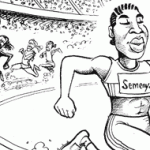
Courtesy of Zapiro, Mail & Guardian
Some of those championing Caster Semenya’s cause accuse those wanting to sex-test Caster of imperialism and racism (as well as sexism). Others plead to wait before reaching a verdict, arguing that the realities of sex testing are enormously complex
Firstly to address the issue of terminology, over which there seems to be confusion. Gender is the dominant society’s views on how women and men should look, behave, what roles they should play in society, how they should perform and frequently what rewards they receive – hence gender inequity. This has usually led to lower status and discrimination against girls/women but has increasingly been seen as limiting the options and potentially harming boys/men too.
Gender is not a politically correct term for sex. Sex testing would be just that – establishing whether a person is biologically female or male. So gender testing is not the term that should be used this case, but sex testing.
Secondly, to tackle the science issue, as this tends to obscure the real issue of gender stereotyping and discrimination so evident in this case. Professor Tim Noakes, an international sports science expert says the issue of ‘unfair advantage’ which is the only thing that should be at play here as it is in the case of drug use,is simple to establish.
He states that the issue that needs to be clarified here is whether the person concerned is a man masquerading as a woman or not. This could be established by a simple physical examination “handled within the usual constraints of the doctor/patient domain – not in the public domain” as has happened in the harmful manner in which the IAAF has handled this.
As for the rest, he says, there is great variation. All other possible tests including chromosome testing is indeterminate and so that should be left well alone. The calls for more to be done in dealing with
this issue and await judgment are therefore erroneous and cloud the issue in a shroud of inappropriate so-called scientific enquiry.
Sissies and butch
The third issue relates to what lies at the heart of the matter, social norms. While issues of racism and imperialism have and will continue to apply in various circumstances and have a sensitive history in terms of
women’s bodies, particularly in Africa, focusing on these issues in the current context obscures the much neglected ‘elephant in the room’ - gender discrimination. Comments within the press and on talk shows are
unwittingly guilty of this same problem in placing ‘blame’ at Athletics South Africa or her coach’s door.
They argue that the authorities should have pre-empted this situation, given her prior experiences (at the hands of the teachers, members of the public and previous authorities). ‘Pre-empting the situation’ would fall prey to the exactly these same prejudices – pandering to what people perceive to be ‘normal’ for girls or women.
This is akin to what might have happened during the apartheid era where actions may have tried to stave off racism by negotiating black people’s entry into racially reserved sporting or cultural events before the
time.
Many white girls who do not ‘look’ as society expects will tell similar humiliating stories of being stopped from entering female public toilets or being questioned as to whether they male or female.
At the core of this issue are ideas about gender – how girls/women and boys/men look and behave and perform (in this case perhaps a young woman winning by 2 seconds ahead of the field is not seen as ‘normal’).
This is what has been so hard to address locally in South Africa, despite our progressive constitution, due to deeply held dominant ideas about what is ‘female’ and ‘male’. It is these ideas and actions that promote gender discrimination. This leads to men, who in societies’ terms do not look ‘masculine enough’, being called ‘sissies’ and women who look not ‘feminine enough’ being labelled ‘butch’.
At the root, gender discrimination
In our own society, this has led to violent attacks on some women and in our own and other countries to violent attacks on some boys/men. This is what we need to clearly point as underlying this case and name it for what it is. Framing the discrimination as racism or imperialism without reference to gender discrimination as the main issue risks reinforcing gender stereotypes.
Societies have a long way to go in terms of changing the dominant ideas on how women and men should look and behave and perform, and in some cases, dress – and allow for variations in ‘looks’ and roles to be
underpinned by what people would like to be and do, rather than societies’ current dominant expectations.
There are many excellent organisations in our own country and abroad that have worked with women and men on this issues, but as it is all to obvious from this and other cases, much work is still needed for these choices and this freedom to take root in the broader society as a whole.
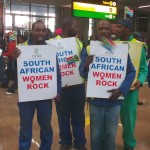
Supporters at the airport. Photo: Marion Stevens
Caster should not be having to deal with a world controversy over her win. She should be unreservedly basking in the glory of her and our incredible victory. No doubt she has experienced this humiliation and discrimination at other levels before and has become somewhat hardened to its effect, but we wish her, her friends and her family strength in dealing with this blatant gender discrimination.
As Caster Semenya and our other gold medal winner, Mbulaeni Mulaudzi, return home – congratulations on your amazing wins and Caster, you have our ful lsupport. For the rest, to Caster’s detractors or apologists, hang your heads in shame for not ‘naming’ the issue for what it is and for perpetuating gender stereotypes and discrimination in her individual case and in society as a whole.’
As we once again approach the 16 days of activism against violence against women, let us bear these issues in mind and not mouth platitudes in our struggle against gender inequity and discrimination.
Diane Cooper – Director, Women’s Health Research Unit, School of Public
Health and Family Medicine, University of Cape Town
Leslie London, Director, School of Public Health and Family Medicine,
University of Cape Town
Nomfundo Eland , Treatment Action Campaign (TAC) Women’s Rights Campaign
Larissa Klazinga and Rhodes Gender Action Project
Lisa Vetten, Tshwaranang Legal Advocacy Centre to End Violence Against Women
Nomfundo Eland, TAC Women’s Rights Campaign
Shirley Walters, University of Western Cape, South Africa
Lillian Artz, Director, Gender, Health and Justice Unit, University of Cape Town, South Africa
Glenn de Swardt, Health4Men
Jane Harries, Associate Director, Women’s Health Research Unit,
University of Cape Town
Jennifer Moodley, Women’s Health Research Unit, University of Cape Town
Sheila Meintjes, Political Studies Department, Wits University
Ilse Ahrends, the Saartjie Baartman Centre for Women and Children
Phumi Mtetwa,the Lesbian and Gay Equality Project
Marion Stevens, Health Systems Trust
Sipho Mthathi, Human Rights Watch South Africa.
Deborah Byrne, Foundation for Human Rights (FHR)
Sumaya Mall, Women’s Health Research Unit, University of Cape Town
Ntobeko Nywagi, Women’s Health Research Unit, University of Cape Town
Sheila Cishe, Women’s Health Research Unit, University of Cape Town
Chelsea Morroni, Women’s Health Research Unit, University of Cape Town
Phyllis Orner, Women’s Health Research Unit, University of Cape Town
Regina Mlobeli, Women’s Health Research Unit, University of Cape Town
Mary Jansen (KIWIA) Khoe San Indigenous Women in Action
Angelica Pino, Gender-based Violence Programme, Centre for the Study of
Violence and Reconciliation
Shireen Hassim, University of Witwatersrand, South Africa
Linda Cooper, Centre for Higher Education and Development, University
of Cape Town
Akosua Adomako Ampofo, Inst. of African Studies and Head, Centre for
Gender Studies & Advocacy, University of Ghana, Legon
Cathy Mathews, Medical Research Council
Fareeda Jadwat, African Gender Institute, University of Cape Town
Ilse Ahrends,Saartjie Baartman Centre for Women and Children, South
Africa
Di McIntyre, NRF chair, Health Economics Unit, University of Cape Town
Andrea Rother, Centre for Occupational and Environmental Health
Research, University of Cape Town
Carol Thomas, thewomanspace
Johanna Kehler, Director, AIDS Legal Network, South Africa
Carrie Shelver, People Opposing Women Abuse, South Africa
Gabi Jiyane, the Lesbian and Gay Equality Project
Balise Mahlangu, the Lesbian and Gay Equality Project
Ayanda Rapita, the Lesbian and Gay Equality Project
Gertrude Fester, Feminist Forum/ Women’s and Gender Studies,University
of Western Cape
Naeemah Abrahams, Gender and Health Research Unit, Medical Research
Council, South Africa
Angelica Pino, Gender-based Violence Programme, Centre for the Study of
Violence and Reconciliation, South Africa
Pamela Scully, Women’s Studies and African Studies, Emory University &
Deputy Editor, Women’s History Review
Mary Jansen (KIWIA) Khoe San Indigenous Women in Action
Melissa Steyn, Department of Sociology, University of Cape Town, South
Africa
Gabi Jiyane,the Lesbian and Gay Equality Project
Marion Heap, Health and Human Rights, School of Public Health and
Family Medicine,University of Cape Town
Balise Mahlanguthe, Lesbian and Gay Equality Project
Bernadette Bredekamp, Division of Family Medicine, University of Cape
Town
Ayanda Rapita, the Lesbian and Gay Equality Project
Larissa Klazinga and Rhodes Gender Action Project
Laura Pollecutt, South Africa
Sokari Ekine,London
Natasha Primo
Alex Kent
Annemarie Hendrikz
Jon Weinberg, Cape Town
Eva Hunt, South Africa
Shirley Gunn, Cape Town
Susan Holland-Muter, South Africa
Tara Weinberg, Cape Town Lavona George, South Africa
Gille de vlieg, South Africa
Michael Weinberg, Cape Town
Anne Schuster, South Africa
Jenny Radloff, South Africa
Kathy Watters, Cape Town
Sakina Mohamed, South Africa
Nicolene McLean, Gender Action Project
Carla Tsampiras, Rhodes History Dept
Corinne Knowles, GENACT
Alan Kirkaldy, NTESU
Thava Govender, Human Development Consulting Agency,KZN, South Africa
Richard Matzopoulos, Medical Research Council and UCT Public Health
Bernedette Muthien, Engender
Sally Gross,Intersex South Africa
Surplus People Project, South Africa
Sharon Stanton, S.L Stanton Attorneys
Tessa Lewin, Communications Manager, Pathways of Women’s Empowerment,
Institute of Development Studies, UK
Nisaa Institute for Women’s Development
What if another wave of xenophobic violence unfurled, like the one that shook South Africa to the core a year ago? It left 50 dead and about 150,000 displaced, [...]]]>
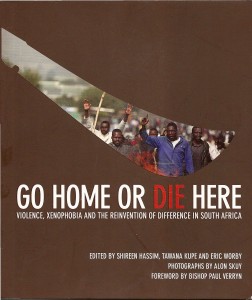 When friends ask me about the World Soccer Cup in South Africa in June 2010, I say there is only one if, but a big if.
When friends ask me about the World Soccer Cup in South Africa in June 2010, I say there is only one if, but a big if.
What if another wave of xenophobic violence unfurled, like the one that shook South Africa to the core a year ago? It left 50 dead and about 150,000 displaced, terrified and destitute immigrants – black, African and foreign. (Click here to see a slideshow)
The army stepped in and the violence subsided. But xenophobia still simmers. In June, IPS reported on yet more murders of Somalis in the Western Cape province. These are so common – 52 in 2008 – they don’t even make national news. Only a really gruesome murder of Somalis – a mother and her children killed and dismembered in their spaza shop last year – makes the front page. Otherwise, murdered Somalis earn only a short news item.
Zimbabweans, Congolese, Tanzanian, Ethiopians and Bangladeshis were also murdered this year – shot, burnt alive, and pushed off a sixth floor from Durban to Cape Town.
“Violence against foreigners is rapidly becoming fully integrated into the standard politics of some townships,” Loren Landau, director of the University of the Witwatersrand’s Forced Migration Studies Programme, told IPS.
A recent report by the Consortium for Refugees and Migrants in South Africa notes that there were no convictions for rape and murder committed during the 2008 attacks, sending a message of impunity.
The report “Protecting refugees, asylum seekers and immigrants in South Africa” says there is little reason to believe that attacks against “outsiders” will not happen again.
For now, the country is in honeymoon period with the new government elected in April on a platform of service delivery and job creation, topped with the success of the soccer Confederations Cup in June.
But if disappointment over unmet expectations coupled with recession sets in, frustration could turn into xenophobic violence.
Violent masculinities
Earlier this year, an insightful and distressing collection of essays, “Go Home or Die Here”, analysed the 2008 attacks.
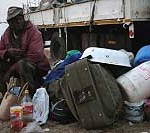
Photo: IPS
From a gender perspective, the authors argue that “negrophobic xenophobia is couched as a battle between two sets of men. (…) the anxieties provoked by economic exclusion and social fragmentation have found expression in violent masculinities, in which weapons are an extension of maleness, and women are no more than bodies to be possessed.”
The striking photos by Alon Skuy illustrate this point. Most are men – rioters armed with sticks and machetes, rifle-toting policemen, bloodied corpses. The few women are at camps for the displaced.
The book’s graphic layout is so sleek that I found it disturbing – a coffee table book on xenophobia? It is borderline with the glamorisation of violence – the gold light bathed photos of angry young men grinning as they chase hapless foreigners.
The photos gave me the same eerie feeling I had in the cholera camps of Goma, in the aftermath of the Rwandan genocide in 1994. Talking to genocidaires, I felt in them pure hatred and a taste for violence. “The problem is that we didn’t kill all the Tutsi cockroaches,” one told me.
The Consortium report notes that “rumours of groups mobilising to finish the job started in May 2008 (…) may easily lead to further violence and displacement”.
If that happens, don’t expect many Africans to come watch soccer in South Africa in 2010.
]]>